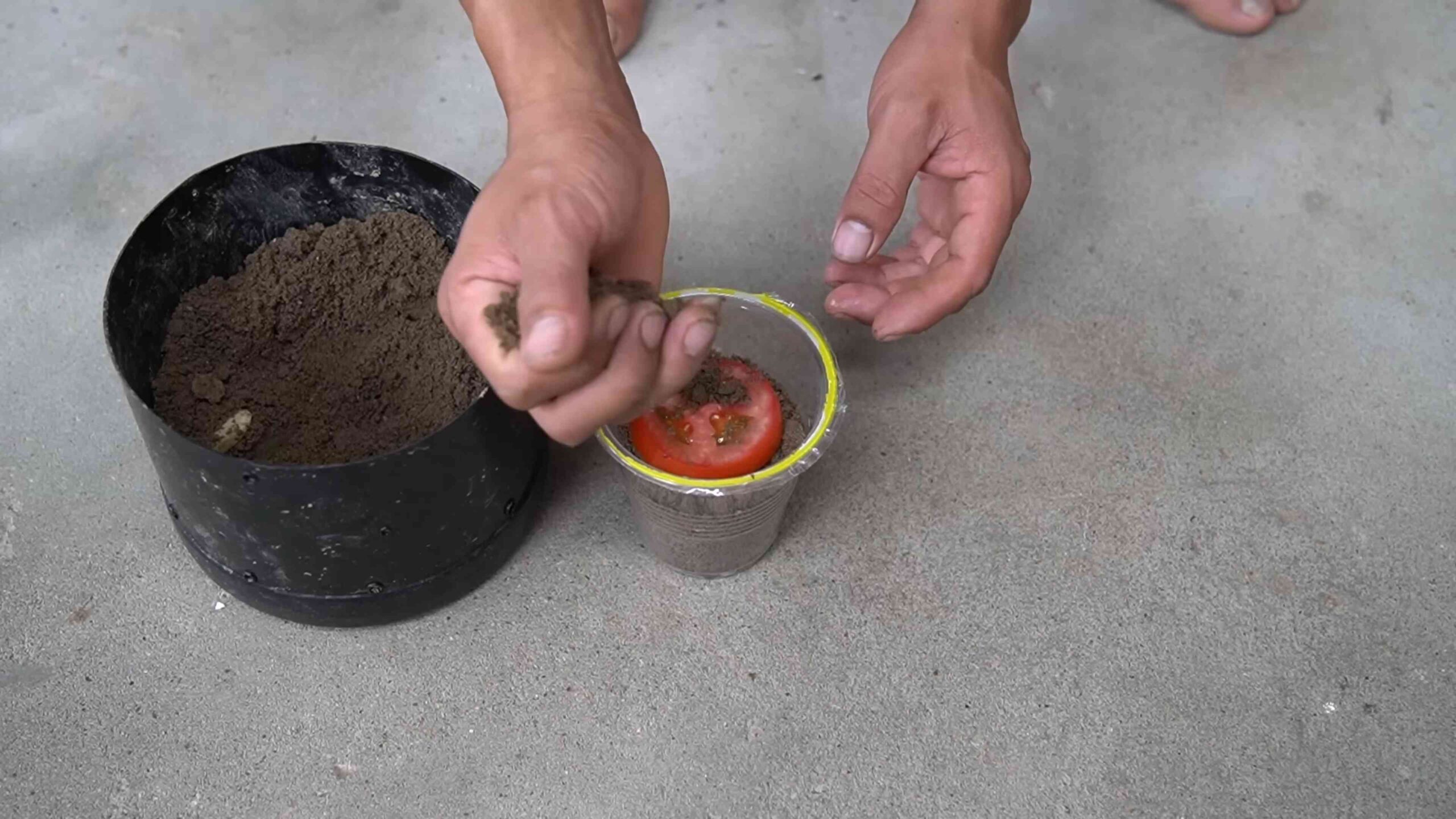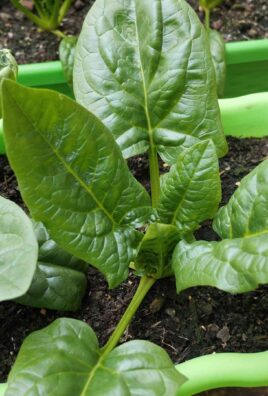Grow bountiful tomatoes backyard – imagine plucking juicy, sun-ripened tomatoes straight from your own garden! There’s nothing quite like the taste of homegrown produce, and the satisfaction of nurturing a plant from seed to harvest. For centuries, cultivating tomatoes has been a cherished tradition, dating back to the Aztecs and Incas who first domesticated these vibrant fruits. From humble beginnings in South America, tomatoes have conquered kitchens worldwide, becoming a staple in countless cuisines.
But let’s be honest, achieving that dream of a tomato-filled backyard can sometimes feel like a daunting task. Pests, diseases, and unpredictable weather can all conspire against your gardening efforts. That’s where these simple, yet effective, DIY tricks and hacks come in! I’m going to share my favorite secrets to help you grow bountiful tomatoes backyard, even if you’re a beginner gardener.
This article is packed with practical tips to overcome common challenges and maximize your tomato yield. Whether you’re dealing with blossom end rot, struggling with pests, or simply want to boost your plant’s growth, I’ve got you covered. Get ready to transform your backyard into a tomato paradise and enjoy the delicious rewards of your labor!

Growing the Juiciest Tomatoes: My Backyard Secrets Revealed!
Okay, tomato lovers, gather ’round! I’m about to spill all my secrets on how I consistently grow the most delicious, plump, and abundant tomatoes right in my own backyard. Forget those bland, store-bought imposters – we’re talking homegrown goodness that will make your taste buds sing! This isn’t just about planting a seed; it’s about creating the perfect environment for your tomato plants to thrive. So, let’s get our hands dirty!
Choosing the Right Tomato Variety
Before we even think about soil, we need to pick the right tomato variety for our needs and climate. This is crucial!
* Consider your climate: Are you in a hot, humid area or a cooler, drier one? Some varieties are more heat-tolerant, while others prefer cooler temperatures.
* Think about size and use: Do you want large slicing tomatoes for sandwiches, smaller cherry tomatoes for salads, or paste tomatoes for sauces?
* Disease resistance is key: Look for varieties labeled with disease resistance codes (like V, F, N, T, A) to protect your plants from common tomato ailments.
* My personal favorites: I swear by ‘Early Girl’ for early harvests, ‘Beefsteak’ for massive slices, ‘Roma’ for sauces, and ‘Sungold’ for the sweetest cherry tomatoes you’ll ever taste.
Preparing the Perfect Tomato Bed
Tomatoes are heavy feeders, meaning they need a lot of nutrients to produce those juicy fruits. So, soil preparation is absolutely essential.
* Sunlight is non-negotiable: Tomatoes need at least 6-8 hours of direct sunlight per day. Choose a location that gets plenty of sun.
* Well-draining soil is a must: Tomatoes hate soggy feet! Amend heavy clay soil with compost, peat moss, or other organic matter to improve drainage.
* Soil testing is your friend: A soil test will tell you the pH level and nutrient content of your soil. Tomatoes prefer a slightly acidic pH of 6.0-6.8. You can buy a soil testing kit at most garden centers or send a sample to your local agricultural extension office.
* Amend, amend, amend!: Even if your soil seems okay, adding compost is always a good idea. I like to add a generous amount of composted manure, leaf mold, and bone meal to my tomato beds. Bone meal provides phosphorus, which is essential for root development and fruit production.
Planting Your Tomato Seedlings
Now for the fun part – getting those little seedlings into the ground!
* Harden off your seedlings: If you’re starting with seedlings from a greenhouse or garden center, you’ll need to harden them off before planting. This means gradually exposing them to outdoor conditions over a week or two. Start by placing them in a sheltered spot for a few hours each day, gradually increasing the amount of time they spend outside.
* Dig a deep hole: Dig a hole that’s deeper than the pot your seedling is in.
* Pinch off the lower leaves: Remove the lower leaves from the stem of the seedling, leaving only the top few sets of leaves.
* Bury the stem: Plant the seedling deep, burying the stem up to the first set of leaves. This encourages the plant to develop more roots along the buried stem, resulting in a stronger, healthier plant.
* Add a handful of Epsom salts: Sprinkle a handful of Epsom salts into the hole before planting. Epsom salts provide magnesium, which helps prevent blossom end rot.
* Water thoroughly: Water the newly planted seedling thoroughly.
* Mulch, mulch, mulch!: Apply a layer of mulch around the base of the plant to help retain moisture, suppress weeds, and regulate soil temperature. I like to use straw, shredded leaves, or wood chips.
Supporting Your Tomato Plants
As your tomato plants grow, they’ll need support to keep them from sprawling on the ground. This is especially important for indeterminate varieties, which can grow several feet tall.
* Choose your support system: There are several options for supporting tomato plants, including stakes, cages, and trellises.
* Stakes: Stakes are a simple and inexpensive option, but they require regular tying to keep the plant upright.
* Cages: Cages provide good support and allow the plant to grow naturally. Make sure to choose a cage that’s tall enough to accommodate the mature size of your tomato variety.
* Trellises: Trellises are a good option for growing tomatoes in a small space. They allow you to train the plant to grow vertically, saving valuable ground space.
* Install support early: Install your chosen support system when you plant the seedlings to avoid damaging the roots later.
Watering and Fertilizing
Consistent watering and regular fertilization are essential for healthy tomato plants and abundant fruit production.
* Water deeply and regularly: Water your tomato plants deeply and regularly, especially during hot, dry weather. Aim to water at the base of the plant to avoid wetting the foliage, which can lead to disease.
* Water in the morning: Water in the morning so the foliage has time to dry before nightfall.
* Fertilize regularly: Fertilize your tomato plants every 2-3 weeks with a balanced fertilizer. Look for a fertilizer that’s specifically formulated for tomatoes.
* Side-dress with compost: In addition to regular fertilization, I like to side-dress my tomato plants with compost every few weeks. This provides a slow-release source of nutrients and helps improve soil health.
Pruning for Success
Pruning tomato plants can seem intimidating, but it’s actually quite simple and can significantly improve fruit production.
* Identify suckers: Suckers are small shoots that grow in the “V” between the main stem and a branch.
* Prune suckers: Prune suckers regularly to encourage the plant to focus its energy on fruit production.
* Remove yellowing leaves: Remove any yellowing or diseased leaves to prevent the spread of disease.
* Top the plant: If you live in an area with a short growing season, you can top the plant in late summer to encourage the remaining fruits to ripen. Topping the plant means cutting off the top of the main stem.
Dealing with Pests and Diseases
Unfortunately, tomatoes are susceptible to a variety of pests and diseases. But don’t worry, with a little vigilance, you can keep your plants healthy and productive.
* Common pests: Aphids, tomato hornworms, and whiteflies are common tomato pests.
* Common diseases: Early blight, late blight, and blossom end rot are common tomato diseases.
* Prevention is key: The best way to deal with pests and diseases is to prevent them in the first place. Choose disease-resistant varieties, provide good air circulation, and avoid overwatering.
* Organic pest control: If you do encounter pests, try using organic pest control methods, such as insecticidal soap or neem oil.
* Fungicides: If your plants develop a fungal disease, you may need to use a fungicide. Choose a fungicide that’s specifically formulated for tomatoes.
* Blossom End Rot Prevention: Blossom end rot is caused by a calcium deficiency. Ensure consistent watering and add calcium to the soil if needed. Crushed eggshells worked into the soil are a great, natural source!
Harvesting Your Bounty
The moment we’ve all been waiting for – harvesting those delicious tomatoes!
* Pick when ripe: Tomatoes are ripe when they’re fully colored and slightly soft to the touch.
* Gently twist: Gently twist the tomato off the vine.
* Enjoy immediately: Enjoy your homegrown tomatoes immediately! They’re delicious in salads, sandwiches, sauces, and so much more.
* Store properly: Store ripe tomatoes at room temperature, out of direct sunlight. Don’t refrigerate them, as this can affect their flavor and texture.
My Bonus Tip: Companion Planting
Companion planting is the practice of planting different plants together to benefit each other. Some great companion plants for tomatoes include:
* Basil: Basil repels tomato hornworms and other pests.
* Marigolds: Marigolds repel nematodes and other soil pests.
* Garlic: Garlic repels aphids and other pests.
* Carrots: Carrots improve soil drainage and aeration.
Troubleshooting Common Tomato Problems
Even with the best care, you might encounter some problems along the way. Here’s how to troubleshoot some common tomato issues:
* Yellowing Leaves: Could be overwatering, nutrient deficiency, or disease. Check soil moisture, fertilize, and inspect for signs of disease.
* Blossom Drop: Often caused by temperature fluctuations. Ensure consistent watering and protect plants from extreme heat or cold.
* Cracked Tomatoes: Usually due to inconsistent watering. Water deeply and regularly, especially during dry spells.
*

Conclusion
So, there you have it! Transforming your backyard into a tomato-growing haven is not only achievable but also incredibly rewarding. This DIY trick, focusing on creating the perfect soil composition and providing consistent support, is a game-changer for anyone looking to grow bountiful tomatoes backyard. Forget struggling with stunted growth, blossom end rot, or plants collapsing under the weight of their delicious fruit. This method addresses the root causes of common tomato-growing problems, setting you up for a season of abundant harvests.
But why is this DIY approach a must-try? It’s simple: control and customization. You’re not relying on generic, store-bought solutions that may or may not be suitable for your specific climate and soil conditions. Instead, you’re crafting a tailored environment that caters precisely to the needs of your tomato plants. This translates to healthier, more vigorous plants, and ultimately, a significantly larger yield of flavorful, juicy tomatoes.
Beyond the basic method, there’s plenty of room for experimentation. Consider adding different types of organic matter to your soil mix, such as aged manure or composted leaves, to further enrich its nutrient content. You could also explore companion planting, incorporating herbs like basil or marigolds to deter pests and attract beneficial insects. For those in cooler climates, consider using raised beds or containers to warm the soil earlier in the season and extend your growing period. Another variation is to experiment with different types of tomato cages or staking methods to find what works best for your plants and your garden space. Some gardeners even swear by Epsom salts, adding a small amount to the soil to boost magnesium levels and encourage fruit production.
The beauty of this DIY trick is its adaptability. Whether you’re a seasoned gardener or a complete beginner, you can easily adjust the techniques to suit your skill level and available resources. The key is to start small, observe your plants closely, and make adjustments as needed. Don’t be afraid to experiment and learn from your mistakes – that’s all part of the fun!
We are confident that by implementing this DIY trick, you’ll be amazed at the difference it makes in your tomato-growing success. Imagine the satisfaction of harvesting baskets full of ripe, homegrown tomatoes, knowing that you nurtured them from seed to table. Think of the delicious sauces, salads, and sandwiches you can create with your own homegrown bounty.
So, what are you waiting for? Grab your gardening gloves, gather your supplies, and get ready to transform your backyard into a tomato paradise. We encourage you to try this DIY trick and share your experiences with us. Let us know what variations you tried, what challenges you faced, and what successes you celebrated. Your feedback will not only help us improve this guide but also inspire other gardeners to embark on their own tomato-growing adventures. Share your photos and stories on social media using #BountifulBackyardTomatoes – we can’t wait to see what you grow! Happy gardening!
Frequently Asked Questions (FAQ)
What type of soil is best for growing tomatoes?
Tomatoes thrive in well-draining, slightly acidic soil with a pH between 6.0 and 6.8. A loamy soil, which is a mixture of sand, silt, and clay, is ideal. Avoid heavy clay soils that retain too much water, as this can lead to root rot. Amending your soil with compost, aged manure, or other organic matter will improve its drainage, fertility, and overall structure. If you’re unsure about your soil’s pH, you can purchase a soil testing kit at most garden centers.
How often should I water my tomato plants?
Water deeply and consistently, especially during hot, dry weather. Aim to water at the base of the plant to avoid wetting the foliage, which can encourage fungal diseases. A good rule of thumb is to water when the top inch of soil feels dry to the touch. The frequency of watering will depend on your climate, soil type, and the size of your plants. As the tomatoes begin to ripen, you may want to reduce watering slightly to concentrate the flavors. Consider using a soaker hose or drip irrigation system to deliver water directly to the roots.
What are the best types of tomato cages or supports to use?
There are several options for supporting tomato plants, each with its own advantages and disadvantages. Traditional wire tomato cages are readily available and relatively inexpensive, but they may not be sturdy enough for large, indeterminate tomato varieties. Staking is another popular method, which involves tying the main stem of the plant to a sturdy stake. This provides excellent support but requires regular pruning to maintain airflow and prevent overcrowding. Florida weave is a technique where you weave twine between stakes to create a support system for multiple plants. Ultimately, the best type of support will depend on the size and growth habit of your tomato plants, as well as your personal preferences.
How do I prevent blossom end rot?
Blossom end rot is a common problem in tomatoes, caused by a calcium deficiency. However, it’s often not a lack of calcium in the soil, but rather the plant’s inability to absorb it properly. Inconsistent watering is a major culprit, as it disrupts the plant’s ability to transport calcium to the developing fruit. Ensure consistent watering, especially during hot, dry periods. You can also add calcium to the soil by incorporating bone meal or crushed eggshells. Avoid over-fertilizing with nitrogen, as this can also interfere with calcium uptake.
What are some common tomato pests and diseases, and how can I control them?
Tomatoes are susceptible to a variety of pests and diseases, including aphids, whiteflies, tomato hornworms, blight, and powdery mildew. Regularly inspect your plants for signs of infestation or disease. Handpicking pests, using insecticidal soap, or applying neem oil can help control infestations. To prevent diseases, ensure good air circulation, avoid overhead watering, and remove any infected leaves promptly. Consider using disease-resistant tomato varieties. Crop rotation can also help prevent soilborne diseases from building up.
Can I grow tomatoes in containers?
Yes, tomatoes can be successfully grown in containers, but it’s important to choose the right size container and potting mix. Select a container that is at least 20 gallons in size for determinate varieties and even larger for indeterminate varieties. Use a high-quality potting mix that drains well and provides adequate nutrients. Water regularly and fertilize every few weeks with a balanced fertilizer. Place the container in a sunny location that receives at least 6-8 hours of sunlight per day.
How do I know when my tomatoes are ripe?
The color of the tomato will change from green to its mature color, depending on the variety. The tomato should also feel slightly soft to the touch but not mushy. Gently twist the tomato from the vine – if it comes off easily, it’s ripe. The aroma of a ripe tomato is also a good indicator.
What are some good companion plants for tomatoes?
Companion planting can help deter pests, attract beneficial insects, and improve the overall health of your tomato plants. Some good companion plants for tomatoes include basil, marigolds, nasturtiums, garlic, onions, and carrots. Basil is said to improve the flavor of tomatoes and repel tomato hornworms. Marigolds deter nematodes and other soil pests. Nasturtiums attract aphids away from tomato plants. Garlic and onions repel a variety of pests. Carrots improve soil aeration and drainage.
How can I extend my tomato growing season?
There are several ways to extend your tomato growing season. Start seeds indoors 6-8 weeks before the last expected frost. Use row covers or cold frames to protect plants from frost. Choose early-maturing tomato varieties. Plant tomatoes in raised beds or containers to warm the soil earlier in the season. Use a cloche or wall-o-water to protect plants from cold temperatures. Harvest green tomatoes before the first frost and ripen them indoors.
What should I do with my tomato plants at the end of the season?
After the first frost, remove any remaining tomatoes from the plants. Cut the plants off at the base and remove them from the garden. Dispose of the plants properly to prevent the spread of diseases. Amend the soil with compost or other organic matter to prepare it for the next growing season. Consider planting a cover crop to improve soil health and prevent erosion.





Leave a Comment